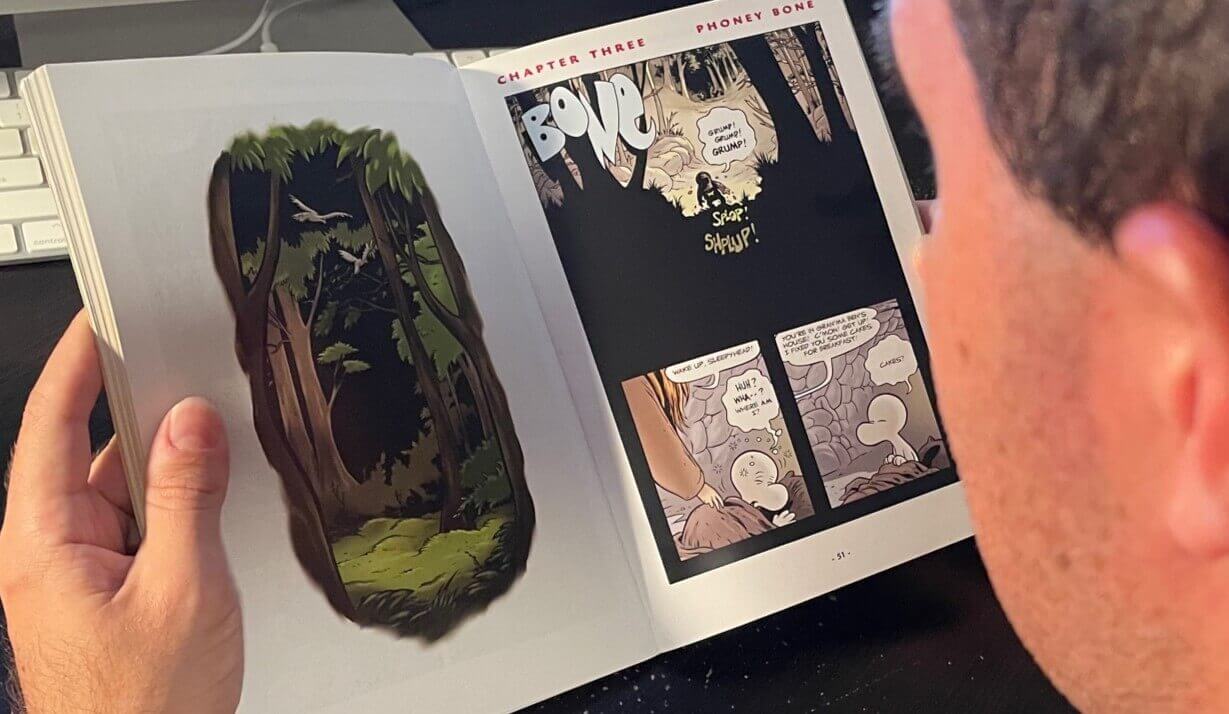You Betcha!!
Many kids that I know, who happen to have disabilities, really love comic books/graphic novels. When they can match the words to what’s happening in the picture, it just seems to make more sense to them. There’s no guessing who said what or where they were when they said it or what type of expression they had on their face at the time. It’s more literal than text that either has no pictures at all, or maybe it just has one picture to go with several sentences, or even paragraphs. For many kids, graphic novels are a great tool that can be used to amplify content area learning. The engaging format and visual elements make them perfect for teaching science and social studies, while increasing their vocabulary and knowledge about plot and character development.
Nothing New to See Here
Comic books, and the ideas behind them, have been around almost as long as there have been humans. Just look at the cave paintings from the prehistoric past and how drawings were used to record history and tell stories to their own tribes, as well as give warnings to others who may venture where they weren’t wanted.
I happen to have personally known one of the Captain America artists, Allen Bellman. He and his wife were part of an Autism Society grandparent group when my son was young. This graphic novel began being published in 1941, just a few months before the Japanese attacked Pearl Harbor and gives kids a great connection to what was occurring in history at the time, as well as enticing them to build their reading skills using superheroes. And who doesn’t love a great superhero story?!
Tidbits about Comic Books
Here are some thoughts shared by Scholastic when it comes to using comics to further a child’s reading skills:
1. Not all comics are about superheroes, and graphic novels do not always include “graphic” storylines. Did you know that there’s a Pride and Prejudice graphic novel? Or that popular Shakespearean plays have been adapted into graphic novels? Did you know that the graphic novel American Born Chinese won the American Library Association’s Printz Award in 2007? Face it, comics and graphic novels are on their way to becoming mainstream!
2. Some teachers and librarians on the 2014 New York Comic Con panel “Super Girls: Using Comics to Engage Female Students in the High School Classroom” listed these as some of the benefits and skills strengthened by graphic novels: motivating reluctant readers, inference, memory, sequencing, understanding succinct language, and reading comprehension.
3. Do you have a kid that skims the page or speed reads? When reading comics, children slow down and look at the images and text to fully ingest what’s happening in the plot.
4. Graphic novels are bringing art education (which is often an endangered program in schools) into the classroom.
5. Graphic novels can be paired with traditional classics. One high school teacher on the “Super Girls” panel said that he’s found success in pairing a canonical text like The Scarlet Letter with a graphic novel like Smile. Both titles are centered on female protagonists feeling alienated, which a lot of tween and teen girls can relate to.
6. Speaking of girls, comics aren’t just for boys. Everybody enjoys a good story. And there are plenty of great graphic novels available for kids of all ages. You can check out great graphic novels and comic book titles from Scholastic’s store or ask your local librarian for suggestions.
7. Teachers and librarians on the “Why Should I Let My Child Read Comics?” panel agreed that graphic novels are great for kids with learning disabilities. Children with autism can learn a lot about identifying emotions through the images in a graphic novel. Additionally, for children with dyslexia, while it might be very frustrating for them to finish a page of a traditional book, they often feel a sense of accomplishment when they complete a page in a comic book. Accomplishment is important. It’s a huge self-esteem booster and leads to kids naturally wanting to read more.
8. However, when kids have lower self-esteem because they aren’t strong readers that can discourage them from wanting to read. But graphic novels are a great way to promote literacy. Teachers and librarians do not want to give ESL students picture books. Kids would reject that and deem it embarrassing. However, a comic book at a lower reading level might give kids the reading confidence they need while boosting reading and language skills.
9. Reading comic books is a great way to share the joy of reading with your child. If you grew up reading Archie or Spider-Man comics, you can share that with your reader now. It’s a great way to strengthen your bond. Plus, kids look up to their parents and want to share and discuss those favorite comics or moments or scenes with you. It’s a no brainer!
10. Do you remember those wordless picture books that your toddler might have chewed on? Well, there are also wordless comic books. These offer a plethora of learning benefits – critical thinking, sequencing, imagination, storytelling, and creativity. Just think, every time that your child reads the book, it will be completely unique. Although the book is filled with pictures, it’s a blank slate just waiting for your child’s imagination to take shape.
When my son was young, his teacher gave the class an assignment to create their own graphic novel and I still have it today! It was an amazing way to get his creative juices flowing, build sentences, think about narration, and develop his story sequencing skills. Plus, it was tons of FUN!

